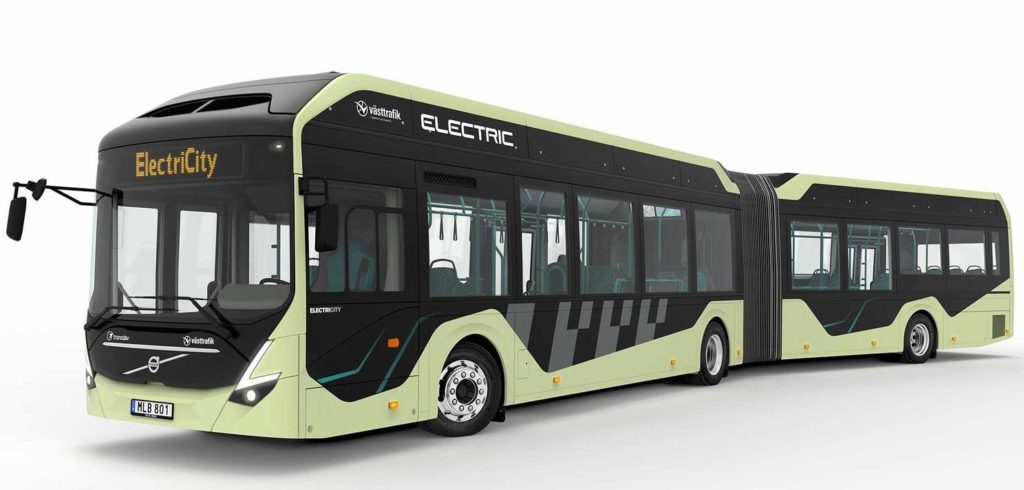In June, two all-electric articulated bus prototypes will be tested in Gothenburg, Sweden, on part of route 16 in daily traffic, with frequent departures, while carrying a large number of passengers.
The trial is being run within the framework of ElectriCity, which since 2015 has been running electrified buses in demo traffic on route 55 in Gothenburg.
“By expanding the demonstration arena and testing high-capacity electric articulated buses on a route that carries many passengers, we can give more people in Gothenburg an attractive alternative to taking their own cars. The new all-electric buses are far quieter than diesel buses, they emit absolutely no exhaust gases, and they are designed for smooth and comfortable travel. They will also form an important basis for decisions about future investments in electric buses,” said Lars Holmin, chairman of public transport company Västtrafik.
In addition to the vehicles themselves, a lot of effort has been spent on developing information on board the buses, including new types of screens, which are being analyzed both inside and outside.
The bus stops at Eriksbergstorget and Lindholmen will also have added weather protection. At the Eriksbergstorget and Sahlgrenska University Hospital bus stops there will be charging stations based on the common OppCharge system interface, so they can also be used by electric buses from other manufacturers.
“Route 16 is one of the lines that transports most passengers in Gothenburg, giving us the opportunity to truly put the technology to the test. For instance, the batteries are sized so the buses can run without needing a break to recharge during peak hours. Instead, recharging will take place when there is less traffic, either at one of the two charging stations now being built on the route or when the buses return to the depot,” explained Håkan Agnevall, president of Volvo Buses.
The new electrically powered articulated buses are part of ElectriCity, a partnership being jointly run by the research community, industry and society, where new solutions for next-generation sustainable urban traffic are developed, demonstrated and evaluated.


